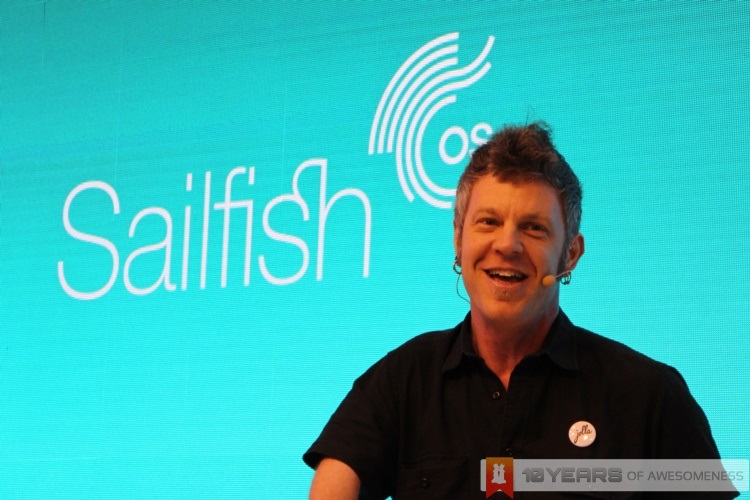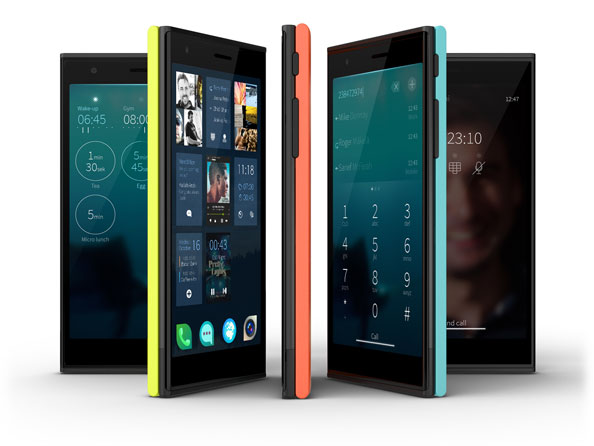
With a rugged outlook and jet black leather pants, it’s hard to imagine that Marc Dillon is a COO and co-founder to one of Finland’s hottest startups. The 11-year ex-Nokia veteran speaks with a demeanour unlike most professionals, and his energy is infectious as he interacts with everyone he meets at Jolla’s MWC 2014 booth. With such positive energy, it is still surprising when he says, without a hint of doubt, “I believe this is gonna be the year of Sailfish”.
This is Lowyat.NET’s exclusive interview with Jolla’s Marc Dillon.
Rising from the Ashes

Two years ago, a little-known startup from Finland managed to obtain a little booth at MWC 2012, far away from the power-suited crowds that throng the world’s largest mobile conference, hoping to tell the world MeeGo is not dead. This booth was manned only by three people. Fast forward two years later, Jolla’s MWC 2014 booth stands tall next to the walkways of Hall 1, recording its highest ever MWC visitor turnout.
“It’s been amazing,” Dillon says as he turns his head to look around the Jolla booth. Curious onlookers aside, Dillon and his team at MWC 2014 were swamped with meetings, both from the press and from industry players including OEMs and operators. I should know, too: I was told that my original interview slot was double-booked with another publication just days before MWC 2014 kicked off. As Jolla’s Carol Chen notes as she attempted to reschedule, almost every half-hour slot from Day 1 to Day 3 reserved for media interviews and industry meetings were full. It was a headache, she says, but definitely a good one to have.
It marks a spectacular turnaround for the mobile startup, considering how bleak the future of many Jolla’s employees were just three years ago. Most of Jolla’s employees were former Nokia staff working on a Linux-based smartphone operating system called MeeGo, who were made redundant when the then-industry giants made the surprising shift in strategy to exclusively produce smartphones powered by Microsoft’s Windows Phone platform. Under the Nokia Bridge program, several of these retrenched staff banded together and founded Jolla to continue the MeeGo work. Today, Jolla – made up of only around 100-0dd employees – is one of the most talked-about companies in the global mobile industry.
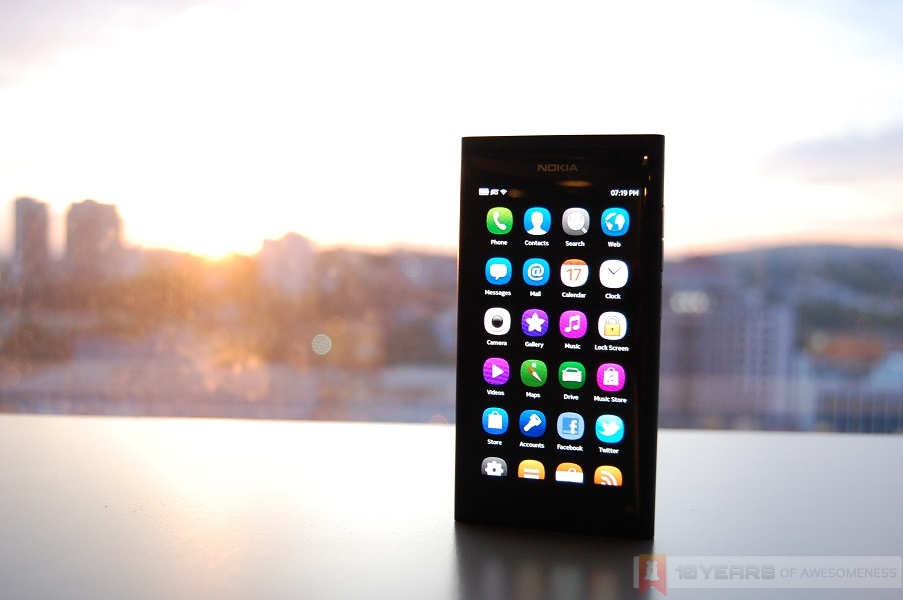 The Nokia N9, the first and only consumer MeeGo-based smartphone
The Nokia N9, the first and only consumer MeeGo-based smartphone
Sailfish OS

At the heart of Jolla is Sailfish, the new operating system based on the previous MeeGo project. With an entirely new user interface that is reminiscent of Swipe UI found on the one and only MeeGo consumer smartphone, the Nokia N9, Sailfish puts its multitasking prowess in the front and centre of the platform. Dillon states that the multitasking capabilities of Sailfish is “state-of-the-art”, and perhaps rightly so: all open apps run actively regardless of whether they are in use or in the background. There are no suspended states, ambiguous “press back to exit” situations, or potentially frustrating first-in-first-out (FIFO) algorithms; Sailfish gives you the power to determine which apps are running, and also the option of closing any app whenever you wish…all on the one home screen of Sailfish.
“(Sailfish has a) state of the art multitasking interface…”
Another aspect of Sailfish that has endeared it to mobile developers and software engineers is the fact that like Android, Sailfish is open-source. Like Android, too, while the core of Sailfish is closed, every other aspect of the platform is open, allowing for plenty of community feedback to improve the platform.
On top of that, there’s the Qt framework and the QML language. While Sailfish is built with an Android virtual machine, allowing it to run Android apps, the Qt framework is the blood that flows within Sailfish. The QML language used in Qt is not only “easy to learn”, according to Dillon, but apps built using the Qt framework are also cross-platform, meaning an app coded once on Qt can run on Sailfish, Symbian, Android, BlackBerry 10, and more recently, work is ongoing to include both iOS and Windows RT.
Of course, the openness of the platform is also an opportunity for differentiation for interested brands. Sailfish is not only open-source, but also “open for business”, as Dillon puts it. “We are very eager to partner, to create new innovation with others,” he continues.
“A Platform for Innovation”…and Brands
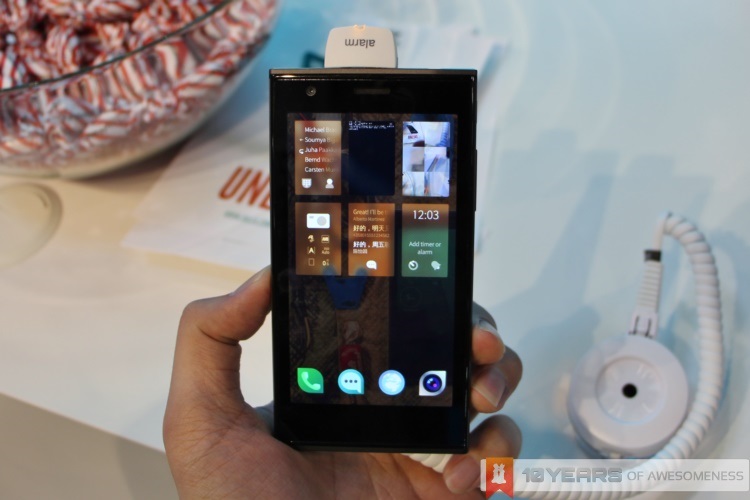 All running apps on Sailfish would appear on the lone home screen, and these “cards” are called Active Covers, where swipe gestures on top of each Active Cover activates an app-specific feature.
All running apps on Sailfish would appear on the lone home screen, and these “cards” are called Active Covers, where swipe gestures on top of each Active Cover activates an app-specific feature.
Innovation. The oft-abused term that constantly finds its way into describing a new mobile product. While many recent “mobile innovations” have largely come in terms of software, Jolla is rethinking that notion with its introduction of “The Other Half“. Essentially, “The Other Half” is what Jolla calls the removable back covers on its first smartphone, curiously also called Jolla.
The Other Half not only sports a chip that downloads new content associated with official The Other Half covers to a connected Jolla smartphone, but each The Other Half cover also contains pins that deliver power and data to and from the phone itself. Community hackers have already begun producing working prototypes back covers with features such as wireless charging, e-ink displays, OLED displays and of course, physical keyboards, and it is only a matter of time before these become commercialised for the Jolla.
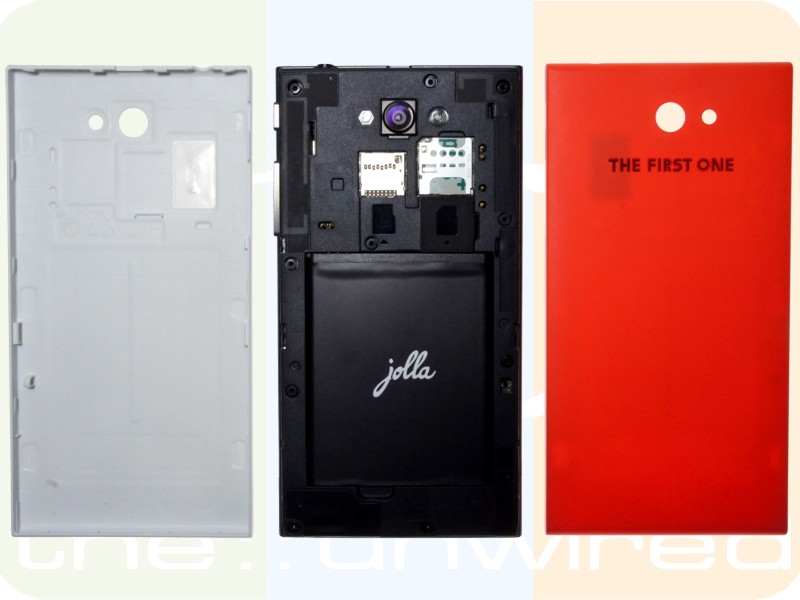 A standard The Other Half cover (left), limited edition Poppy Red Other Half (right), and the Jolla (centre).
A standard The Other Half cover (left), limited edition Poppy Red Other Half (right), and the Jolla (centre).
(image via www.mobilelinuxnews.com)
However, after a short while speaking to Dillon, it is clear the company is giving free rein for the community to explore what crazy and/or innovative ideas can be achieved for The Other Half. Ideally, it should also be that Jolla itself also contribute with developing The Other Half covers that extend the device’s functionality, but the company isn’t doing that…and maybe with good reason.
As a startup with limited resources, Jolla is solely focused on improving the Sailfish platform as well as roping in as many potential partnerships it can manage. The Other Half isn’t just an opportunity for creating innovative new covers, it is also a platform for brands to extend its presence into both a device’s software and hardware, creating a truly unique device that prominently features the brand.
“You can truly have a custom smartphone for your brand.”
“The Other Half has a chip inside that…downloads software that allows any kind of application or customization for a customer or brand house or content provider,” Dillon said. “You can truly have a custom smartphone for your brand,” he continued.
Great Risk, Great Rewards

Of course, not everything that Jolla is doing relates to establishing partnerships for its The Other Half covers. Its primary focus remains on Sailfish, and for MWC 2014, the company made a bold announcement: Sailfish can be flashed into an Android device, and Jolla will also release a custom Sailfish launcher for Android for those less inclined to root their smartphones. In fact, Jolla’s MWC booth also had a section called “Jolla Labs”, showing off not only prototype The Other Half covers, but also Sailfish running on Android devices such as an LG Nexus 4, ASUS Nexus 7 as well as a Samsung Galaxy S III.
It is a potentially risky move, but one that can be richly rewarded. Despite its larger presence at this year’s MWC, Jolla remains a small fish in a large ocean. It needs eyeballs looking at the software, it needs people trying out the system; it needs people talking about it, period. In an industry dominated by Android and iOS, this isn’t an easy task. Technically, it isn’t difficult for Sailfish to run on Android devices, since both platforms are based on Linux. It is only a matter of recompiling driver packages to play nice with Sailfish before it runs smoothly on an Android device.
“People can take their Android device, put Sailfish on it, and make it better.”
By allowing Sailfish to be flashed into Android devices, Jolla is hoping that not only more developers would begin porting their apps to Sailfish, but also for Android users to “port” to Sailfish. With over 1 billion smartphones sold in 2013, and 78.4% of them running on Android, converting even the tiniest of fractions of Android users to use Sailfish would be a massive shot in the arm for Jolla and Sailfish. From there, the company is confident that the platform’s capabilities can hold its own.
Now that the Sailfish platform is finally out of beta, Jolla is ready for the world. It has announced that sales for the Jolla smartphone would expand to Russia, India and Hong Kong. Dillon expects that with these new markets, Sailfish penetration would begin increasing in 2014. A release in China should soon also follow, given that they have struck a deal with Chinese retailer, D.Phone, for over a year now.
“I believe this is gonna be the year of Sailfish.”
For Marc Dillon, Jolla is ready. The Sailfish platform is ready, and is constantly improving with its monthly software updates.
Will 2014 be the year of Sailfish then? We’re about to find out.
Follow us on Instagram, Facebook, Twitter or Telegram for more updates and breaking news.


